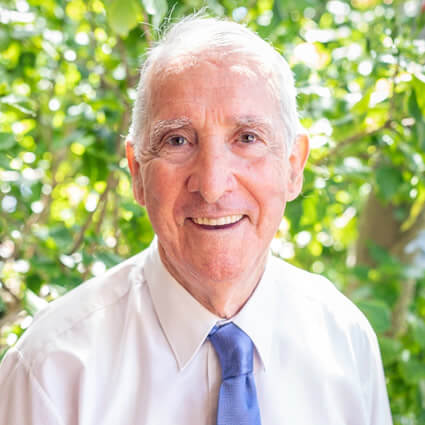 Australia’s Chiropractors Registration Board created a trade restraint by requiring that disorders that chiropractors claim to be able to help must be supported by a high level of evidence.
Australia’s Chiropractors Registration Board created a trade restraint by requiring that disorders that chiropractors claim to be able to help must be supported by a high level of evidence.
An equivalent legal regulation confining medical practitioners to the provision of only evidence-based medical treatment would make Medicare unworkable. When Sussan Ley was Minister for Health she stated: “Medicare has only assessed or tested 3% of the 5,700 items to see whether they actually work, are out of date or, are even harmful.”
The NZ medical association introduced the fictional restraint of two distinct categories of nervous system disorders, M for musculoskeletal type and O for organ-type disorders, which was rejected.i Later it was adopted by Australia’s regulators and now prohibits chiropractors from managing many organ-type disorders.
Regarding evidence.
Quoting this studyii “A recent study has found that only 1 in 20 medical treatments have high-quality evidence supporting their benefits.”
Rather than 5 in 100, the British Medical Journal claimed that 50% of the treatments used in general practice are not proven.iii
“Only a fraction of what physicians do is based on solid evidence from Grade-A randomized, controlled trials; the rest is based instead on weak or no evidence and on subjective judgment. When scientific consensus exists on which clinical practices work effectively, physicians only sporadically follow that evidence correctly.” “Half of what physicians do is wrong,” or “Less than 20 per cent of what physicians do has solid research to support it.” Although these claims sound absurd, they are solidly supported by research that is largely agreed upon by experts.”iv
In the most downloaded document of all time in the Public Library of Medicine’s peer-reviewed, open-access journal, John P. A. Ioannidis explains that about half of the most highly regarded research findings within “evidence-based” medicine are either wrong, or significantly exaggerated.v
Quoting Science News: “Much of the evidence that evidence-based medicine assumes is baloney, based on malfeasance (that means wrongdoing) misunderstandings and faulty methodology.vi”
The rate of non-evidence-based prescribing is up to 40% in adults and up to 90% in paediatric patients.vii Off-label prescribing refers to the prescription of a registered medicine for other than its proven use. Decades ago, 10,000 infants all over the world were affected, and countless others died in utero when many doctors prescribed thalidomide for the non-evidence-based treatment of morning sickness.
The May 12, 2017 Melbourne Age reported, “About half of orthopaedic surgical procedures have no scientific evidence from randomised trials proving they work better than non-operative treatment.”
The bulk of medical advertising is about drugs, which is subject to TGA regulations, not to AHPRA regulations. Hence, drug advertising uses testimonials and lacks essential information for patients to make adequate informed consent. Therefore, the claims made in these advertisements are not subject to intense verification as being soundly, acceptably evidence-based.
Death is the ultimate harm arising from medical treatment as distinct from the patient’s disorder. The USA iatrogenic death rate is said to be “more than 30 avoidable deaths an hour, the equivalent of 20 jumbo jets going down per week, each full of Americans and 10 million dollars of wasted cash as cargo.”viii According to Null et al: “It is now evident that the American medical system is the leading cause of death and injury in the US.”ix
Australia’s media is silent about no nation having evidence-based iatrogenic death tolls. Evidence-based medicine never evidences its most important statistic, the totality of its iatrogenic national, and its global, annual iatrogenic death tolls.
- Chiropractic in New Zealand Report 1979 P.D. Hasselberg, Government Printer Wellington, New-Zealand -1979
- https://www.weforum.org/agenda/2022/06/medical-treatments-medicine-healthcare-global-health/
- “How much of orthodox medicine is evidence based?” BMJ 2007; 335 doi: https://doi.org/10.1136/bmj.39388.393970.1F (Published 08 November 2007) Cite this as: BMJ 2007;335:951
- Health Care Myth Busters: “Is There a High Degree of Scientific Certainty in Modern Medicine?” By Sanjaya Kumar, David B. Nash on March 25, 2011 Scientific American
- “Data fraud in clinical trials” Stephen L George 1 and Marc Buyse Public Library of Medicine’s peer-reviewed, open access journal
- “Evidence-based medicine actually isn’t” Science News August 18, 2014
- “Off-label use of medicines: consensus recommendations for evaluating appropriateness” Madlen Gazarian, Maria Kelly, John McPhee, Linda Graudins, Robyn Ward and Terence Campbell Med J Aust 2006; 185 (10): 544-548.
- Journal of Patient Safety. An NTSB for Healthcare, Learning from Innovation: Debate and Innovate or Capitulate. Charles R. Denham, MD,* Chesley B. Sullenberger III, MS,† Dennis W. Quaid,* John J. Nance, JD‡
- http://www.lef.org/magazine/mag2004/mar2004_awsi_deth_02.htm
